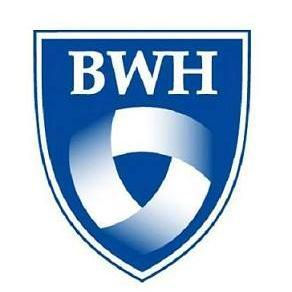预约演示
更新于:2025-05-07

Obafemi Awolowo University
更新于:2025-05-07
概览
关联
46
项与 Obafemi Awolowo University 相关的临床试验NCT06812208
Implementation Strategies to Decentralize Breast Ultrasound Services and Facilitate Timely Breast Cancer Diagnoses in Rwanda
Diagnosing breast cancer early is critical to reduce preventable breast cancer deaths in sub-Saharan Africa. This can be done in part through increasing patients' access to breast ultrasound, which is essential for evaluating breast masses. However, ultrasound is typically provided only by radiologists at urban referral hospitals. Training clinicians at rural district hospitals who are not radiologists could increase patients' access to breast ultrasound, but strategies to support and supervise these clinicians and ensure they are providing high-quality ultrasound services has not been studied.
This project will examine the effectiveness and cost of two strategies for training non-radiologist clinicians to perform breast ultrasound in Rwandan district hospitals.
This project will examine the effectiveness and cost of two strategies for training non-radiologist clinicians to perform breast ultrasound in Rwandan district hospitals.
开始日期2026-04-01 |
申办/合作机构 |
NCT06039956
De-escalating Axillary Surgery After Neoadjuvant Chemotherapy in Node Positive Breast Cancer Patients in Nigeria
In sub-Saharan Africa, breast cancer patients often present with advanced disease. In my previous research which evaluated over 600 patients from a prospective institutional data base, about 64% of women with a new diagnosis of breast cancer presented with locally advanced disease, including clinically positive axillary adenopathy. Our data also suggests that similar to African American women, triple negative breast cancer (TNBC) is common in Nigeria (43.5%).
The overall goal of the project is to evaluate the ability of existing technology in Nigeria to safely de-escalate axillary surgery in the management of locally advanced breast cancer patients. Currently, the standard-of-care for breast cancer patients with palpable axillary adenopathy (clinical N1 disease without evidence of distant metastases) at presentation in Nigeria is neoadjuvant systemic therapy followed by a modified radical mastectomy. This includes a complete axillary lymph node dissection (ALND). However, data from high-income countries however show that up to 85% of patients initially presenting with cN1 disease can be converted to cN0 (i.e. no palpable adenopathy) following NAC. These patients can thus safely undergo sentinel lymph node biopsy (SLNB) with up to 50% of these having pathologic complete response in the lymph nodes. In this patient population, both methylene blue and radio-isotope localization with Tc-99 sulphur colloid are required to ensure adequate performance of the SLNB to stage the axilla(i.e. false negative rate ≤10%). Although widely available in high-income countries, radio-isotope localization is not readily available in Nigeria. This project will explore an alternative to dual agent SLNB localization using readily available resources and multi-disciplinary collaboration in a lower-income environment. De-escalation of axillary surgery in high-income countries has significantly decreased operative morbidity and improved patient reported outcomes without compromising survival. However, context specific research and data from resource limited environments is needed to translate the benefit of de-escalation to sub-Saharan Africa.
The overall goal of the project is to evaluate the ability of existing technology in Nigeria to safely de-escalate axillary surgery in the management of locally advanced breast cancer patients. Currently, the standard-of-care for breast cancer patients with palpable axillary adenopathy (clinical N1 disease without evidence of distant metastases) at presentation in Nigeria is neoadjuvant systemic therapy followed by a modified radical mastectomy. This includes a complete axillary lymph node dissection (ALND). However, data from high-income countries however show that up to 85% of patients initially presenting with cN1 disease can be converted to cN0 (i.e. no palpable adenopathy) following NAC. These patients can thus safely undergo sentinel lymph node biopsy (SLNB) with up to 50% of these having pathologic complete response in the lymph nodes. In this patient population, both methylene blue and radio-isotope localization with Tc-99 sulphur colloid are required to ensure adequate performance of the SLNB to stage the axilla(i.e. false negative rate ≤10%). Although widely available in high-income countries, radio-isotope localization is not readily available in Nigeria. This project will explore an alternative to dual agent SLNB localization using readily available resources and multi-disciplinary collaboration in a lower-income environment. De-escalation of axillary surgery in high-income countries has significantly decreased operative morbidity and improved patient reported outcomes without compromising survival. However, context specific research and data from resource limited environments is needed to translate the benefit of de-escalation to sub-Saharan Africa.
开始日期2025-11-01 |
申办/合作机构 |
PACTR202410538749711
Assessment of Drug and Diagnostic Resistance Signature in Plasmodium falciparum: Implications on Strategies for Malaria Control in Nigeria
开始日期2024-10-01 |
申办/合作机构 |
100 项与 Obafemi Awolowo University 相关的临床结果
登录后查看更多信息
0 项与 Obafemi Awolowo University 相关的专利(医药)
登录后查看更多信息
13,545
项与 Obafemi Awolowo University 相关的文献(医药)2025-12-31·Sustainable Environment
Assessment of sustainable tourism and tourist satisfaction using importance performance analysis and regression method
作者: Olawale, Joseph ; Aniramu, Opeyemi ; Odelola, Raphael ; Okebugwu, Joseph ; Aniramu, Tosin
2025-12-31·NRIAG Journal of Astronomy and Geophysics
Investigation of aquifer plausible zones and their protective capacity using hydraulic parameters in Modomo/Kajola, Ile-Ife, Southwestern, Nigeria
作者: Olumurewa, Kayode Oladele ; Adenika, Charles Itunu ; Ariyibi, Emmanuel A.
2025-12-31·Pulmonology
Quality of life associated with breathlessness in the multinational Burden of Obstructive Lung Disease (BOLD) study: A cross-sectional analysis
Article
作者: Nielsen, Rune ; Cherkaski, Hamid Hacene ; Cardoso, Joao ; Müller, Alexander ; Juvekar, Sanjay ; Dias, Herminia Brites ; Janson, Christer ; Obaseki, Daniel ; Elsony, Asma ; Koul, Parvaiz ; Janssen, Daisy J A ; Wouters, Emiel F M ; Rodrigues, Maria Fatima ; Nafees, Asaad ; Agarwal, Dhiraj ; Harrabi, Imed ; Rashid, Abdul ; El Rhazi, Karima ; Hartl, Sylvia ; Mannino, David ; Gíslason, Thorarinn ; Anand, Mahesh Padukudru ; Paraguas, Stefanni Nonna ; Denguezli, Meriam ; Bárbara, Cristina ; Jõgi, Rain ; Al Ghobain, Mohammed ; Burney, Peter ; Potts, James ; Studnicka, Michael ; Mortimer, Kevin ; Franssen, Frits M E ; Amaral, André F S ; Biaze, Mohammed El ; Seemungal, Terence ; Erhabor, Gregory ; Ahmed, Rana
1
项与 Obafemi Awolowo University 相关的新闻(医药)2021-04-24
UPMC Hillman Cancer Center appoints hematology chief
Pittsburgh-based UPMC Hillman Cancer Center has selected Taofeek Owonikoko, MD, PhD, as chief of hematology, effective July 1.
In his new role, Dr. Owonikoko will oversee a division of more than 65 hematology and oncology clinical care and research leaders. He will work to expand access to clinical trials across Hillman's network by spearheading translational research efforts. In addition to leading the cancer center's hematology department, Dr. Owonikoko will serve as associate director for translational research and co-leader of its cancer therapeutics program.
He joins UPMC from Atlanta-based Emory University's hematology and oncology department, where he served as a professor and vice chair for faculty development, among other leadership positions.
A clinical expert in the treatment of lung cancer, Dr. Owonikoko sits on the editorial boards of Cancer, Translational Lung Cancer Research and Journal of Thoracic Disease.
Dr. Owonikoko earned his medical degree from Obafemi Awolowo University in Nigeria and completed a postdoctoral fellowship at Baltimore-based Johns Hopkins University.
© Copyright ASC COMMUNICATIONS 2021. Interested in LINKING to or REPRINTING this content? View our policies by clicking here.
100 项与 Obafemi Awolowo University 相关的药物交易
登录后查看更多信息
100 项与 Obafemi Awolowo University 相关的转化医学
登录后查看更多信息
组织架构
使用我们的机构树数据加速您的研究。
登录
或

管线布局
2026年01月05日管线快照
无数据报导
登录后保持更新
药物交易
使用我们的药物交易数据加速您的研究。
登录
或

转化医学
使用我们的转化医学数据加速您的研究。
登录
或

营收
使用 Synapse 探索超过 36 万个组织的财务状况。
登录
或

科研基金(NIH)
访问超过 200 万项资助和基金信息,以提升您的研究之旅。
登录
或

投资
深入了解从初创企业到成熟企业的最新公司投资动态。
登录
或

融资
发掘融资趋势以验证和推进您的投资机会。
登录
或

生物医药百科问答
全新生物医药AI Agent 覆盖科研全链路,让突破性发现快人一步
立即开始免费试用!
智慧芽新药情报库是智慧芽专为生命科学人士构建的基于AI的创新药情报平台,助您全方位提升您的研发与决策效率。
立即开始数据试用!
智慧芽新药库数据也通过智慧芽数据服务平台,以API或者数据包形式对外开放,助您更加充分利用智慧芽新药情报信息。
生物序列数据库
生物药研发创新
免费使用
化学结构数据库
小分子化药研发创新
免费使用

